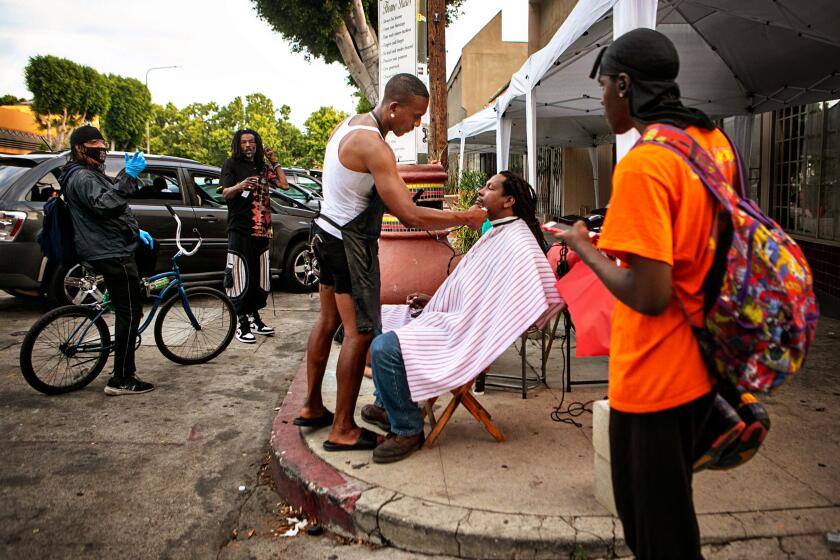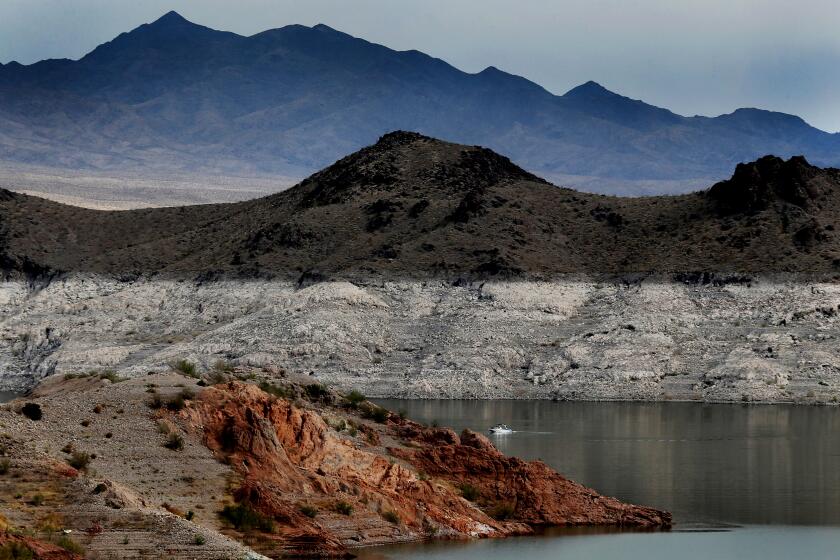Flex Alert extended through Friday as heat wave sears California

- Share via
Despite assurances that the power grid remains stable, California’s energy operator has issued statewide Flex Alerts for electricity conservation Thursday and Friday evenings as temperatures around the region continue to break records.
The mercury soared in the Southland on Thursday, with some areas seeing triple-digit highs for the fourth day in a row. Death Valley hit 128 degrees, surpassing a record of 122 for the date set in 1917, said meteorologist Clay Morgan of the National Weather Service in Las Vegas.
In August, the area hit 130 degrees, one the highest mercury readings on Earth in almost 90 years.
The weather service has issued excessive heat warnings and advisories across much of Southern California.
In response, the California Independent System Operator, which oversees the electrical grid for most of the state, is asking residents to voluntarily conserve energy in hopes of reducing strain on the system.
The Flex Alert — a first in 2021 — was in effect from 5 to 10 p.m. Thursday, during which residents were to cut back on their energy use. Late Thursday afternoon, the agency announced that a second Flex Alert will be in effect from 6 to 9 p.m. Friday.
Mark Rothleder, chief operating officer of the ISO, said during a media briefing that he didn’t expect power outages would be necessary. He called the Flex Alert for Friday a cautionary measure.
“We expect we’ll be able to make it through the evening ... without having to resort to emergency efforts,” he said.
According to the ISO, evening is the most difficult time of day for grid operations because demand for electricity remains high while solar energy generation diminishes.
Consumers are asked to limit their electricity use between 5 and 10 p.m. to avoid the shutoffs that happened during last year’s heat waves.
The statewide call is critical because “when temperatures hit triple digits across a wide geographic area, no state has enough energy available to meet all the heightened demand,” the agency said in a statement, “primarily due to air-conditioning use.”
Rothleder said the Friday Flex Alert was prompted in part by multiple natural-gas-fired generators not being available at the last minute. At least some of the 1,100 megawatts that were lost unexpectedly came from Ormond Beach Generating Station, a gas plant in Oxnard that state officials recently allowed to stay open an additional three years specifically so that it would be available during heat waves.
Several hundred megawatts of gas-fired power that weren’t expected to be available did come online, partly counteracting those outages. Rothleder also said cloud cover in the Southern California desert reduced generation at solar farms.
The first alert was issued hours after the ISO said that the power grid is stable and that there is no anticipation of imposing rotating power outages.
“We project enough reserves to cover demand for tomorrow evening,” the agency said Wednesday, “but ask Californians to remain vigilant.”
The state also announced Thursday afternoon that Gov. Gavin Newsom had signed an emergency proclamation that suspends certain permitting requirements to allow for the use of backup power generation that will alleviate the strain on the state’s grid.
As the heat sizzles, residents are also advised to stay inside, drink water and limit outdoor activities as much as possible.
Lancaster saw a peak temperature of 111 degrees Thursday, while the Santa Clarita Valley reached 101, said Lisa Phillips, a meteorologist with the National Weather Service in Oxnard. Santa Ynez hit 99.
In Los Angeles County, temperatures climbed to 95 in Pasadena and 93 in Burbank. Downtown L.A. reached 87 degrees while Santa Monica saw a much cooler 74 degrees.
‘Early heat waves and more frequent heat waves this summer will exacerbate an already serious situation,’ one climatologist said.
Records were set Wednesday when the temperature reached 113 in Lancaster, 112 in Palmdale and 101 in Sandberg. Previous records for that day for all three were set in 1961.
There is some relief on the horizon: A cooling trend is expected over the weekend.
“In terms of the worst of the heat, probably [Friday] will be the last of it,” said Rich Thompson, a weather service meteorologist in Oxnard.
Some areas on Thursday even experienced a welcomed bit of moisture as a brief and isolated rain shower popped up near the San Gabriel Valley about 9 a.m., meteorologist Mike Wofford said.
“It’s nothing organized or widespread,” he said. “It’s kind of a rogue shower.... It’s not indicative of any major change in the pattern or anything that will be ending the drought.”
Ahead of the Flex Alerts, the ISO recommended that residents charge their electronic devices and pre-cool their homes. Once the Flex Alerts begin, residents are asked to avoid using major appliances and unnecessary lights and set thermostats at 78 degrees or higher if health permits.
During similar heat waves in August and September, energy conservation probably prevented severe rotating outages, the agency said Thursday. But if demand still outpaces supply after Flex Alerts and other measures are taken, the ISO could again “order utilities to begin rotating power outages” in an effort to extend available supplies and prevent longer and more extensive disruptions.
“The public’s help is essential when extreme weather or other factors beyond our control put undue stress on the electric grid,” ISO President and Chief Executive Elliot Mainzer said in a statement, and “their cooperation can really make a difference.”
Times staff writers Leila Miller and Sammy Roth contributed to this report.
More to Read
Sign up for Essential California
The most important California stories and recommendations in your inbox every morning.
You may occasionally receive promotional content from the Los Angeles Times.













